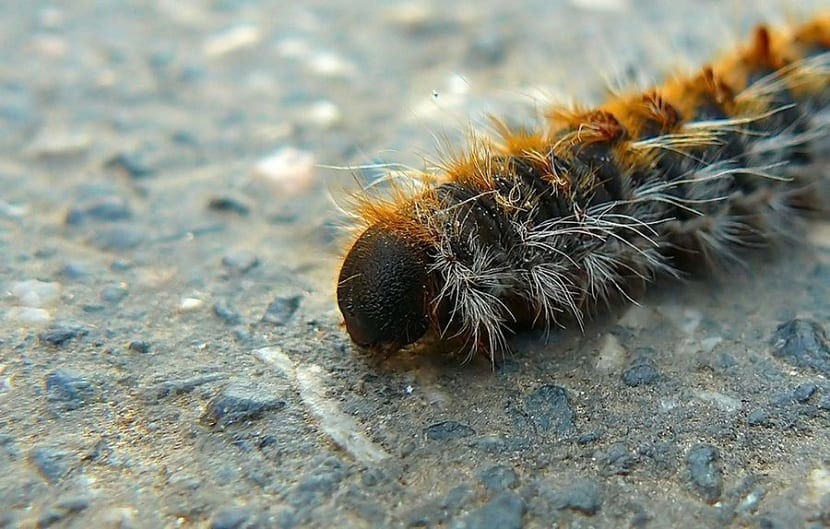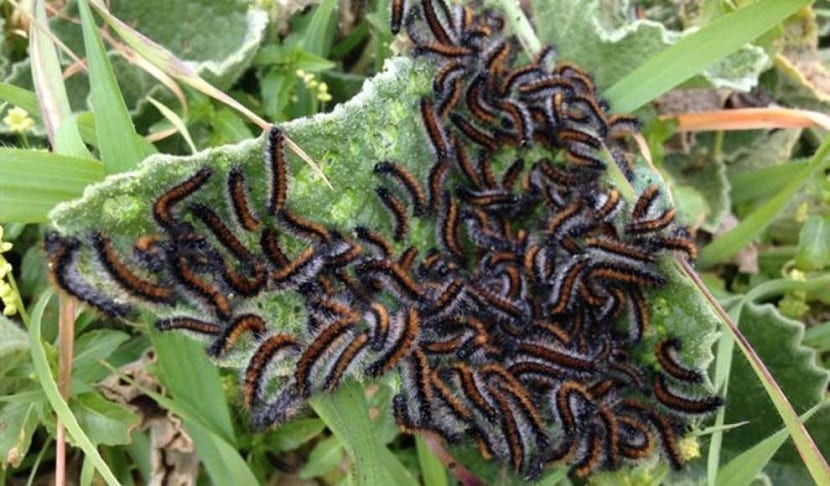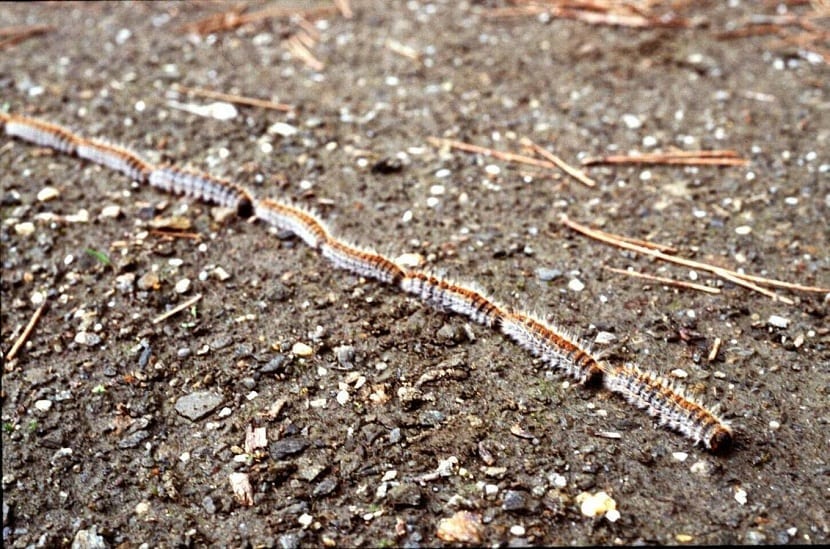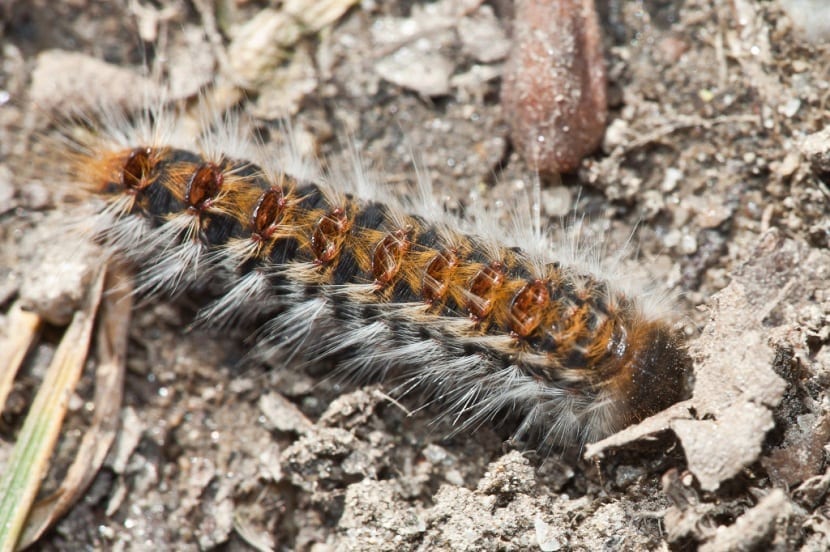
Today we are going to talk about a topic that concerns the Pine and all of us. Is about the pine processionary. It is considered the most important pest in the pine areas of the Mediterranean. They are a set of caterpillars that move in a line as if it were a procession. That's where its name comes from. Its scientific name is Thaumetopoea pityocampa and it is found in the pine forests of the Mediterranean. It can affect gardens and forests and among its consequences we can find serious damage to humans.
In this article we are going to tell you what the pine processionary is and its life cycle and how we can combat it to remedy its consequences. Want to know more about her? Keep reading because we explain everything to you.
What is the pine processionary

To make it clear how we can identify this important pest, let's make it clear what it is. It is a very frequent nocturnal butterfly in these places, whose caterpillar phase has these striking characteristics. And is that they move forming lines like processions. They build nests in the pines and the emerging shoots feed on. Apart from damaging the tree it parasitizes, it becomes a plague that also affects humans.
As spring progresses we can see a trail of diseased and skeletal pines, the result of parasitism by this caterpillar. If the populations of processionary are controlled it is not necessary to resort to any type of action. The problem arises when the number of these colonies is excessive and their impact is noticeable in the Mediterranean pine forests.
On an aesthetic level, we can see that it is a disaster. Seeing the pines in that bad condition does not cause good feelings. However, these caterpillars they are not able to determine whether this tree lives or dies. Pines are capable of sprouting again after being raided and even more vigorously.
This type of pest also attacks cedars and firs, although it is more abundant in pine.
When spring arrives, all the processionary nests begin to hatch. It is then when the nocturnal butterfly begins to populate the pine forests of Alicante and the entire province, the southern area and the center of Spain. These areas are where we find more populations since the environmental conditions for their development are more optimal.
How to recognize them

The pine processionary lays the eggs on the apical branches of the pine trees. In these higher areas there are new shoots of the tree and, therefore, fresher and more nutritious for the caterpillars. This is the reason for placing the eggs in this part. Caterpillars have long hairs on their bodies.
The problem with these caterpillars is that this hair with which it is covered has stinging substances that can cause serious damage to humans. It is possible that you will see a procession of these caterpillars and it will attract attention to go see them. With the slightest threat these insects feel, they will be able to release their stinging hairs to defend themselves. It also seriously affects dogs that come across them and try to eat them. For it to affect us, there is no need for direct contact. As soon as they feel threatened, they release their hairs into the air and will cause irritations and allergies.
There have been cases in which people who try to step on them have received allergies without the slightest contact. The pine species that are most vulnerable are: Pinus nigra (black pine), Pinus canariensis (canary pine), (Pinus sylvestris) (Scots pine), Pinus pinaster (pine pinaster), propagating through a pine forest (Pinus halepensis). (Aleppo pine) and Pinea pine (stone pine). That is, all those who are in the areas mentioned above.
Life cycle of Thaumetopoea pityocampa

Depending on the climate of the area where they live, the pine processionary is laying eggs. When a month passes, you can see the characteristic pockets in the pines from where the caterpillars begin to form.
The larvae that have hatched in summer spend the coldest months hiding in the pockets of the apical areas. These bags are made of a very silky yarn. In each pocket we can find between 100 and 200 larvae. When night falls, these larvae begin their search for food and parasitize the leaves and young shoots of the pine.
If they are too cold or have finished feeding, they return to the bag to feel protected. Global warming affects these pests with increasing global temperatures. If these larvae enjoy more warm days a year, they are capable of reproducing even more numbers than if it is cold.
It is at the end of winter when they come down from the pine to bury themselves and become butterflies. In late summer these butterflies leave the land and copulate to lay eggs again in the pines. The butterflies that are born from the earth are hardly known by the population since they only have a life of 24 hours. At that time they just copulate and lay eggs for the next generation.
It is in the larval phase of caterpillars that they most actively feed. In this way they get to eat completely all the complete needles of the pine. It is the environmental conditions that decide when the larvae descend from the pines to reach the ground, bury themselves and pupate.
The caterpillar that leads the procession is a female and looks for the shadiest and warmest days in the area to bury itself. The optimum temperature at which it is buried is about 20 degrees.
How to fight it

- The first prevention task we have is the one to eliminate the pockets. In this way, we will be eliminating the number of individuals who will become adults.
- Eliminate caterpillars when they come down from the tree. Some plastics can be placed with water so that, when they come down from the tree, they end up drowning.
- Destroy buried nesting areas. You just have to look at the areas where there is a small mound of about 15-25 cm. We will dig them up and kill them.
- With some pheromone traps we can capture the males and prevent it from fertilizing the females.
- Introduce natural predators that do not affect other populations such as chickadees and blue tit.
I hope that with this information you can learn more about the pine processionary.